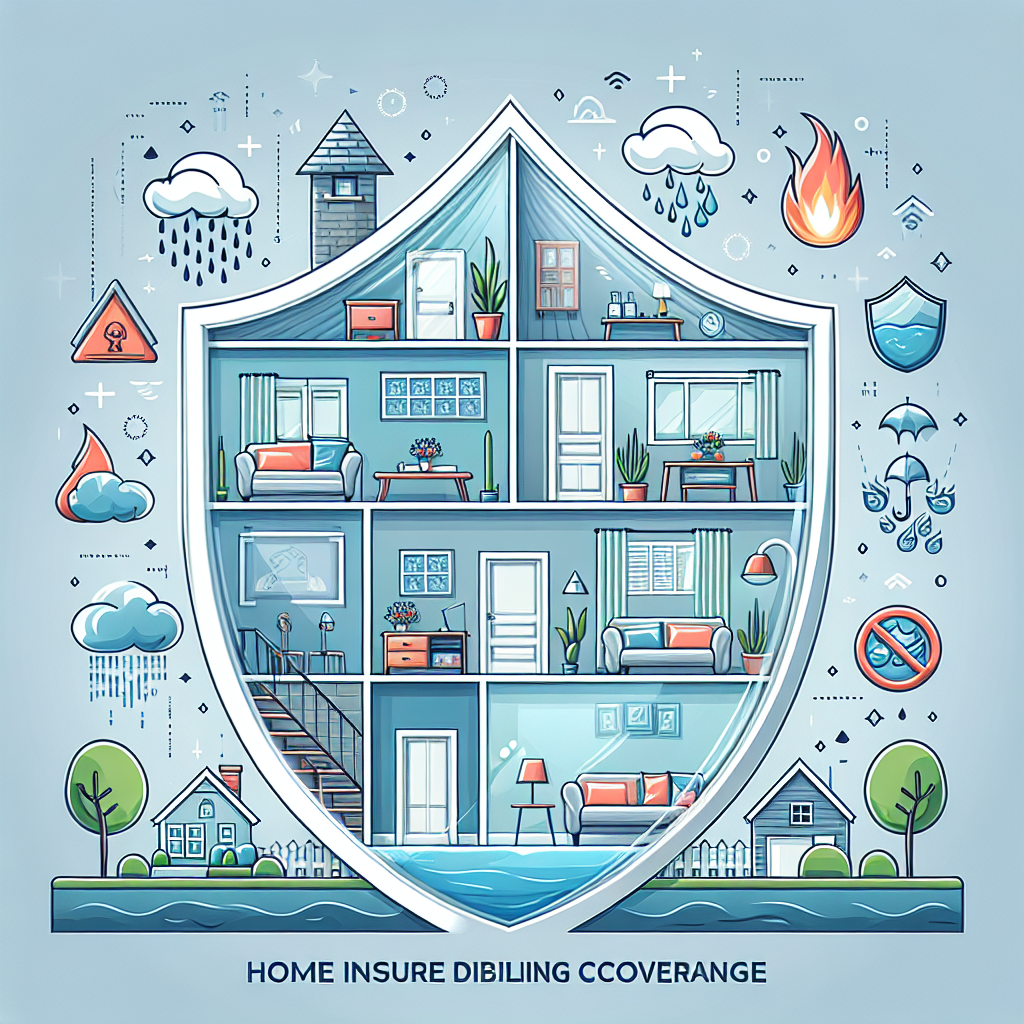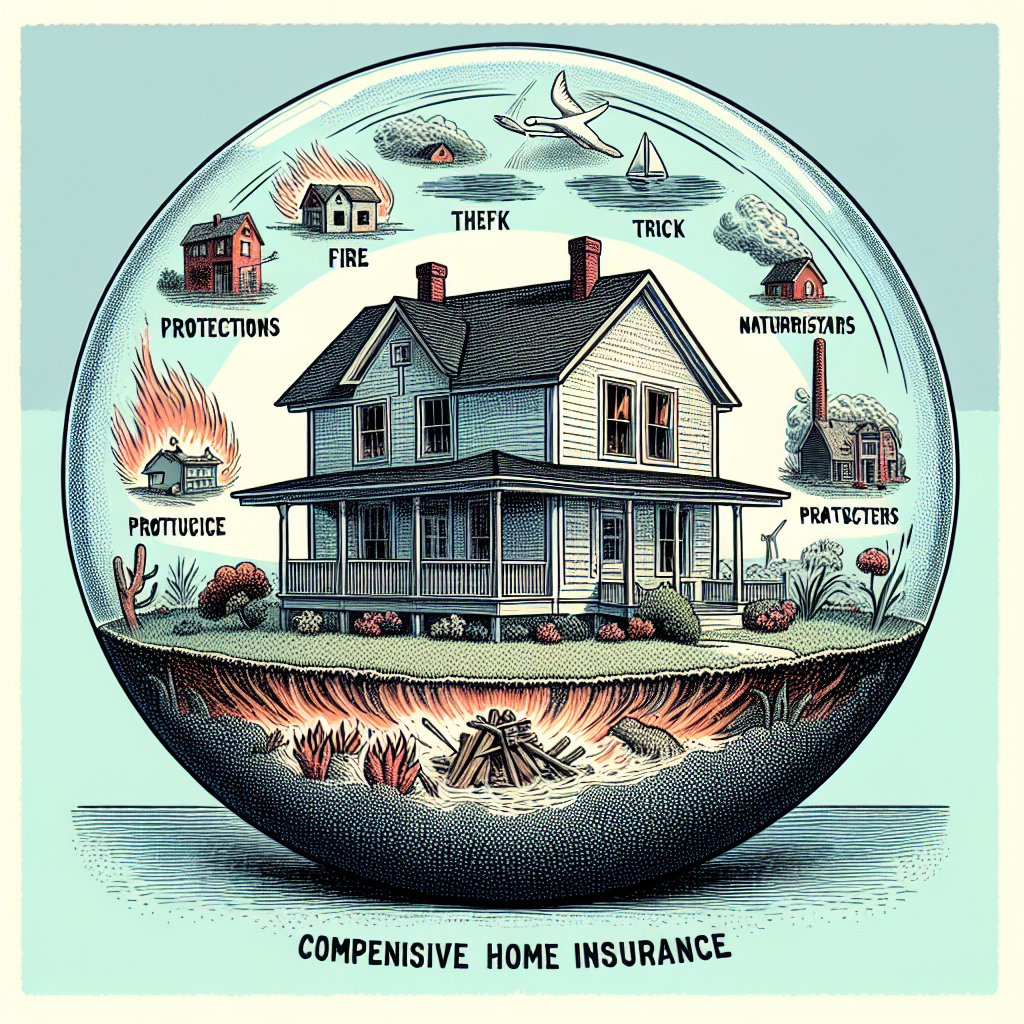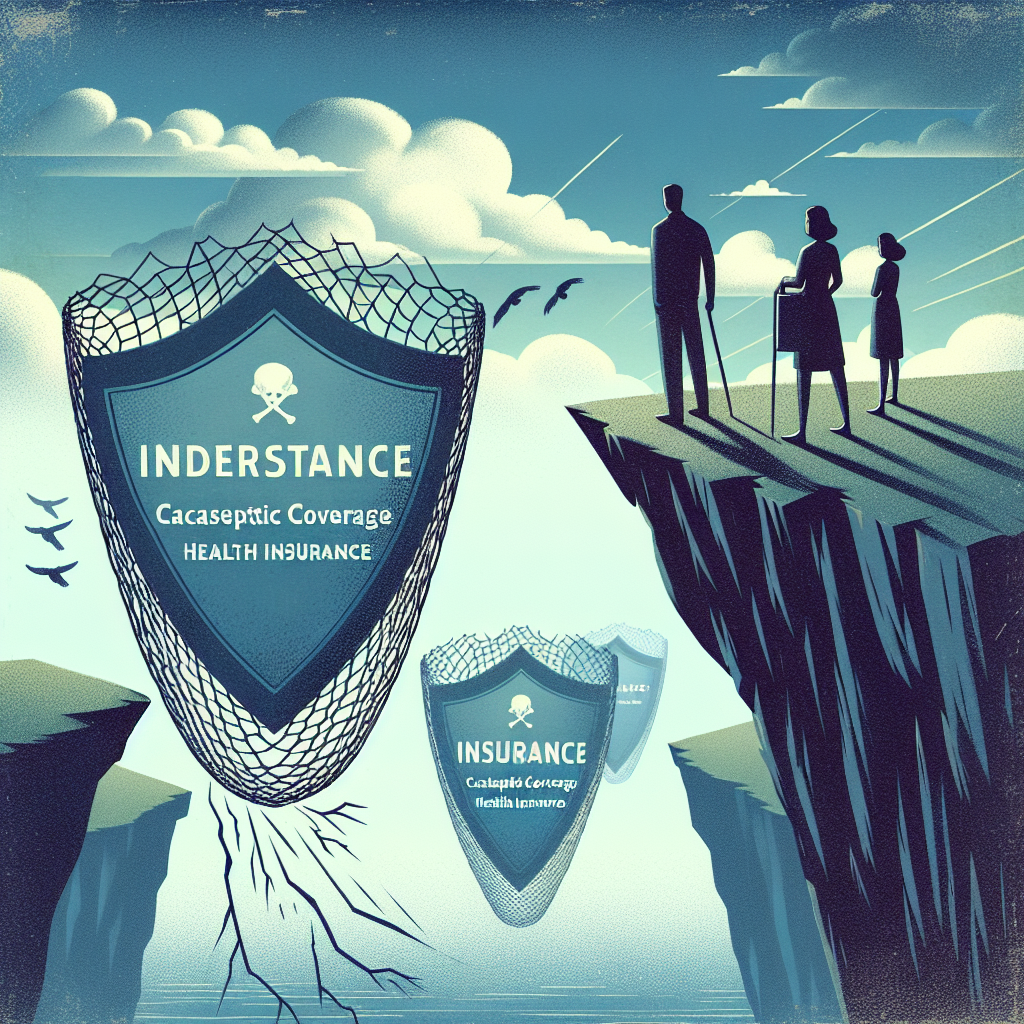Filed under Home Insurance on
What Is Home Insurance Dwelling Coverage Explained

You pay your mortgage, mow the lawn, and keep an eye on the roof. But when it comes to what actually protects the physical structure of your home, many people aren’t sure where to start. That’s where home insurance dwelling coverage comes in. It’s the backbone of your homeowners policy, the piece that pays to repair or rebuild the structure if it’s damaged by a covered event. In the guide below, you’ll learn what it covers, what it doesn’t, how much you likely need, and how to fine-tune it as construction costs and climate risks evolve.
Understanding the basics
In most homeowners policies, dwelling coverage is labeled Coverage A. It protects the physical structure of your home: the walls, roof, foundation, built-in appliances, cabinetry, and attached structures such as an attached garage or deck. If a covered peril (like fire, windstorm, theft, or a burst pipe) damages your home, Coverage A is what funds repairs or full reconstruction up to your policy limit, minus your deductible.
It’s important to note that home insurance dwelling coverage is not based on your home’s market value. Instead, it’s tied to the replacement cost of rebuilding the structure with similar materials and quality at current prices. That distinction matters, especially during periods of construction inflation, labor shortages, or supply chain volatility.
What dwelling coverage typically includes
A standard homeowners policy (such as an HO-3) generally covers your dwelling on an “open perils” basis, which means everything is covered except what’s specifically excluded. Common covered causes include fire and smoke, wind and hail, explosions, lightning, sudden water discharge from plumbing, vandalism, and falling objects.
What counts as part of the dwelling
- Primary structure: walls, roof, floors, foundation, and attached features like chimneys or built-in porches
- Attached garage and attached deck or patio
- Built-in fixtures: cabinets, countertops, plumbing and electrical systems, built-in appliances, and central HVAC
- Permanent flooring and finishes: tile, hardwood, and installed carpeting
If you tear out your kitchen after a burst pipe and need to replace custom cabinets and stone countertops, those are usually included in home insurance dwelling coverage (subject to your policy terms and settlement method).
What dwelling coverage does not cover
Dwelling coverage is broad, but not limitless. Understanding exclusions helps prevent surprises at claim time.
Common exclusions and gaps
- Flood: Surface water, storm surge, and river overflow require separate flood insurance (often via the National Flood Insurance Program or private flood policies).
- Earthquake and earth movement: Typically excluded unless you purchase a separate earthquake endorsement or policy.
- Wear and tear: Gradual deterioration, maintenance issues, and defects are not covered.
- Mold and rot: Limited coverage at best; often subject to low sub-limits and specific conditions.
- Sewer or drain backup: Requires an optional endorsement with its own limits.
- Code upgrades: Ordinance or law costs to bring the rebuilt home up to current building codes are usually only partially covered unless you add an endorsement.
- Vacancy-related losses: Some perils may be limited if the home is vacant for a defined period.
One more key gap: detached structures, like a shed or a fence, are not part of dwelling coverage. Those fall under Coverage B (Other Structures) and have a separate limit, typically 10% of Coverage A by default. You can adjust that if you have significant detached features on your property.
How much dwelling coverage do you need?
The right limit is the amount it would cost to rebuild your home with like kind and quality in today’s dollars, not what you paid for it or what it might sell for. Rebuilding cost is influenced by square footage, local labor rates, material costs, architectural complexity, special features, and code requirements.
A practical way to estimate your limit
- Start with living area square footage, including finished basements if applicable.
- Identify construction quality and style: basic, standard, custom, or luxury; single-story vs multi-story; roof type.
- Note special features: custom cabinetry, high-end finishes, smart-home wiring, solar panels, or specialty windows.
- Ask your agent or insurer to run a replacement cost estimator: most carriers use tools powered by Verisk, CoreLogic, or similar platforms that track local construction costs.
- Add code upgrade considerations: older homes often need extra funds to meet current building codes.
- Review inflation guard and extended replacement cost endorsements (explained below) to cushion against cost spikes.
Industry sources like the Insurance Information Institute and the National Association of Insurance Commissioners consistently stress the replacement cost approach. In recent years, reconstruction costs have outpaced general inflation due to labor shortages and materials volatility, making it even more critical to revisit your limit each renewal.
Policy types and settlement methods that affect your payout
How your insurer calculates the amount they pay after a loss matters as much as your limit. Two concepts dominate: the type of homeowners form you carry and whether your dwelling is insured at actual cash value (ACV) or replacement cost value (RCV).
HO-3 vs HO-5
- HO-3 (Special Form): Most common; the dwelling is covered on an open-perils basis, while personal property is typically covered for named perils.
- HO-5 (Comprehensive Form): Broader coverage; open perils for both dwelling and personal property with generally fewer limitations, though it may cost more.
ACV vs RCV
- Actual Cash Value (ACV): Pays the depreciated value of damaged parts based on age and condition.
- Replacement Cost Value (RCV): Pays the full cost to repair or replace with similar materials, without deducting for depreciation, up to the policy limit.
Most homeowners aim for RCV on the dwelling. However, some carriers apply depreciation to certain roof types or ages unless you’ve purchased a roof replacement cost endorsement. Review your declarations page and endorsements carefully.
Key endorsements that strengthen your dwelling coverage
Endorsements can drastically change the outcome of a large loss. Consider the following upgrades to home insurance dwelling coverage.
Extended or guaranteed replacement cost
- Extended Replacement Cost: Adds an extra layer, typically 10%–50% above your Coverage A limit, to absorb unforeseen cost spikes after a major catastrophe or during inflationary periods.
- Guaranteed Replacement Cost: Promises to rebuild your home as it was, regardless of limit, subject to policy terms. Not available in all states or with all carriers.
Ordinance or law (code upgrade) coverage
- Helps pay the extra cost to bring your property up to current building codes during repairs. Common limits are 10%–50% of Coverage A, and higher limits may be wise for older homes.
Sewer and drain backup
- Provides coverage if water backs up through sewers or drains and damages your home. This peril is typically excluded without the endorsement.
Roof surfacing and matching
- Roof settlement endorsements can determine whether you receive ACV or RCV on your roof. Matching endorsements help address situations where only part of a roof or siding is damaged but a uniform appearance is required.
Water mitigation and smart devices
- Some insurers offer credits or coverage enhancements for leak detection systems and automatic shutoff valves. These devices can prevent large losses and help keep premiums in check.
Cost drivers for dwelling coverage
Premiums are influenced by more than just your home’s size. Insurers weigh multiple risk factors to price home insurance dwelling coverage responsibly.
What affects the price
- Reconstruction cost: Material and labor rates in your area, as well as architectural complexity
- Roof age and type: Newer, impact-resistant roofs typically cost less to insure
- Location hazards: Wildfire exposure, hail frequency, hurricane risk, and distance to a fire station or hydrant
- Claims history: Prior losses at the property or by the policyholder can increase rates
- Deductibles: Higher deductibles lower premiums, but consider separate percentage deductibles for wind/hail or named storms
- Protective devices: Monitored alarms, water shutoff, and fire sprinklers can reduce costs
- Building features: Older wiring or plumbing may raise premiums due to loss potential
Market realities and trends to watch
Recent industry data from organizations like CoreLogic and Verisk highlights ongoing reconstruction cost volatility since 2020, driven by labor constraints and commodity swings. The Insurance Information Institute notes a rise in catastrophe losses linked to convective storms, wildfires, and hurricanes, prompting many carriers to refine underwriting appetites and adjust rates.
Practical implications for you include more granular deductibles (wind/hail percentages), roof settlement changes for older roofs, and stricter requirements for wildfire mitigation in high-risk zones. In wildfire-prone regions, insurers and state regulators increasingly emphasize defensible space, ember-resistant vents, and Class A roofing materials. In hail belts, Class 4 impact-resistant shingles can lead to meaningful premium credits while reducing loss severity.
How claims work for the dwelling
When the worst happens, a smooth claim process can make a difficult time more manageable. Here is what to expect after a covered loss.
Step-by-step
- Ensure safety first: Evacuate if necessary and contact emergency services.
- Mitigate further damage: Shut off water, board up openings, and keep receipts for any temporary repairs.
- Notify your insurer promptly: Provide a basic description and photos or videos.
- Claims inspection: An adjuster may visit to document damages. For large or complex losses, you might consider an independent contractor estimate to compare.
- Coverage evaluation: The insurer confirms which parts of the loss fall under home insurance dwelling coverage and calculates ACV and RCV if applicable.
- Payment timing: Many RCV settlements are paid in two parts: an initial ACV payment and a subsequent holdback released as repairs are completed.
- Contractor selection: You choose who does the repairs; your insurer may provide a preferred network, but you’re not obligated to use it unless your policy says otherwise.
- Code compliance: If you carry ordinance or law coverage, coordinate with your contractor and adjuster to address code-driven upgrades.
Example scenario
A lightning strike sparks a fire, damaging your kitchen and roof. Your policy is HO-3 with RCV on the dwelling, a $2,000 deductible, $500,000 Coverage A, 25% extended replacement cost, and 25% ordinance or law.
- Initial estimate: $420,000 to rebuild affected areas to like kind and quality
- ACV payment: Depreciation of $40,000 is initially withheld; insurer issues ACV minus deductible
- Repair invoices: As work proceeds, you submit invoices and receive the $40,000 depreciation holdback
- Code upgrades: The city requires upgraded electrical and a fire-resistant roof deck, costing $45,000; ordinance coverage responds within its sub-limit
- If costs spike to $540,000: The extended replacement cost endorsement can add up to $125,000 in extra room beyond the $500,000 limit
Without extended replacement cost or ordinance coverage, you could be responsible for tens of thousands out of pocket.
Common mistakes to avoid
- Using market value as your limit: This can lead to severe underinsurance or overpaying for coverage you don’t need.
- Ignoring cost escalation: Renovations, finish upgrades, and inflation should trigger a limit review.
- Overlooking code upgrades: Older homes often face high compliance costs; add ordinance or law coverage.
- Accepting ACV for roofs without understanding the impact: Depreciation can cut payouts sharply on older roofs.
- Not reading the deductible page: Wind/hail or named storm deductibles can be a percentage of Coverage A, not a flat amount.
- Undervaluing detached structures: Coverage B might be too low for extensive fencing, a large shed, or a detached garage.
Ways to save without gutting protection
Optimizing home insurance dwelling coverage is about balance. You want meaningful savings that don’t jeopardize your ability to rebuild.
Smart strategies
- Bundle auto and home: Often yields 10%–25% discounts.
- Adjust deductibles thoughtfully: A higher all-perils deductible can cut premiums, but make sure you can afford it in a crisis.
- Improve your roof: Impact-resistant Class 4 shingles may reduce hail premiums and withstand storms better.
- Mitigate water damage: Install leak detectors and an automatic shutoff valve; some insurers offer device credits or premium reductions.
- Harden your home for wildfire: Create defensible space, upgrade vents, and consider noncombustible cladding; some carriers reward IBHS FORTIFIED standards.
- Maintain systems: Update old plumbing, electrical, and heating to lower loss potential.
- Shop, but don’t chase the lowest sticker: Compare coverage forms, settlement methods, sub-limits, and endorsements—not just price.
Checklist for your annual coverage review
- Confirm your square footage and finishes in the insurer’s replacement cost estimator.
- Update for renovations or additions; share invoices and material specs.
- Check your settlement method: RCV vs ACV, especially for roofs.
- Review extended or guaranteed replacement cost endorsements.
- Adjust ordinance or law limits if your home is older or local codes changed.
- Assess other structures and personal property limits.
- Evaluate wind/hail or named storm deductibles and your emergency fund.
- Ask about discounts for protective devices or fortified building standards.
Special situations to consider
Every home is unique. These situations can complicate how home insurance dwelling coverage applies.
Historic or custom homes
- Specialty materials and craftsmanship can drive higher rebuild costs.
- Discuss functional replacement cost if exact replication is impractical.
- Higher ordinance or law limits are often prudent.
Short-term rentals or home-sharing
- Standard policies may exclude or limit coverage for business activities.
- Ask about home-sharing endorsements or landlord policies for extended rentals.
Condo and townhome owners
- Dwelling coverage can apply to interior improvements and fixtures depending on the HOA master policy.
- Clarify who insures what: walls-in vs studs-in vs bare walls.
New construction and major renovations
- Consider a builder’s risk policy during construction.
- After completion, update your homeowners dwelling limit with as-built specs.
Frequently asked questions
Is dwelling coverage required by my lender?
Yes, if you have a mortgage, your lender will require enough coverage to protect their collateral. Even without a loan, carrying adequate dwelling coverage is essential to safeguard your investment.
How often should I adjust my limit?
At least annually, and any time you remodel, add square footage, or upgrade finishes. Consider carriers that offer inflation guard, which automatically raises your Coverage A each renewal, though you should still verify the result against current rebuilding costs.
Is flood damage ever covered by dwelling coverage?
No, traditional homeowners policies exclude flood. Purchase a separate flood policy if you have exposure. Remember that more than a quarter of flood claims come from outside high-risk zones, according to long-standing FEMA insights.
What about earthquakes?
Most policies exclude earth movement. If you live in a seismically active area, consider adding an earthquake endorsement or a standalone earthquake policy with its own deductible and limits.
Can I choose my own contractor?
In most cases, yes. Your insurer may suggest preferred contractors, but selection is typically your choice. Verify licensing, insurance, and references, and ensure the scope of work aligns with the adjuster’s estimate before authorizing repairs.
Why does my neighbor pay less?
Premiums are highly individualized. Differences in roof age, wiring, claims history, protection class, and policy endorsements can lead to noticeable pricing gaps—even on the same street.
Quick glossary
- Coverage A (Dwelling): The limit for your home’s structure and attached components.
- Replacement Cost Value (RCV): Pays to replace without depreciation.
- Actual Cash Value (ACV): Replacement cost minus depreciation.
- Ordinance or Law: Coverage for code-required upgrades during repairs.
- Extended Replacement Cost: Adds extra cushion above your Coverage A limit.
- Inflation Guard: Automatically increases coverage each renewal to track cost trends.
Action plan: Put it all together
- Request a fresh replacement cost estimate from your agent or carrier and validate the details.
- Set your Coverage A to full replacement cost, then add extended or guaranteed replacement cost if available.
- Choose RCV for the dwelling, and add roof-specific endorsements if needed.
- Increase ordinance or law coverage, particularly for older homes or tight code environments.
- Address known exclusions with add-ons: flood, earthquake, and sewer backup where appropriate.
- Harden your home: invest in roof upgrades, water shutoff devices, and wildfire mitigation for safety and potential savings.
- Revisit the plan annually, especially after renovations or significant market changes.
The bottom line
Your home may be your largest asset, and the stakes are high when disaster strikes. Strong, well-calibrated home insurance dwelling coverage ensures that if you have a major loss, you can rebuild without derailing your finances. In a world of rising reconstruction costs and evolving weather risks, the details—settlement terms, endorsements, deductibles—matter more than ever.
Make time each year to confirm that your limits reflect real-world rebuilding costs, your endorsements close critical gaps, and your prevention measures earn the credits you deserve. With a thoughtful approach, you can keep coverage robust, pricing sensible, and your home ready for whatever comes next.
Natural keyword integration recap
Throughout this guide, we explored how home insurance dwelling coverage protects the structure of your home, how to size your limit correctly, and which endorsements extend protection. As you review your policy, focus on replacement cost, code upgrades, and exclusions that often surprise homeowners. If you take only one step this week, ask your agent for a fresh reconstruction estimate and compare it to your current Coverage A limit. That single action can make all the difference when you need your policy to perform.
Final thoughts
Clarity and preparation turn a complex policy into a practical tool. Whether you own a modest bungalow or a custom build, calibrating home insurance dwelling coverage to current conditions is the smartest move you can make. Stay proactive, ask pointed questions, and align your coverage with how homes are really rebuilt today—not how they were priced yesterday. That’s how you protect both your property and your peace of mind.





